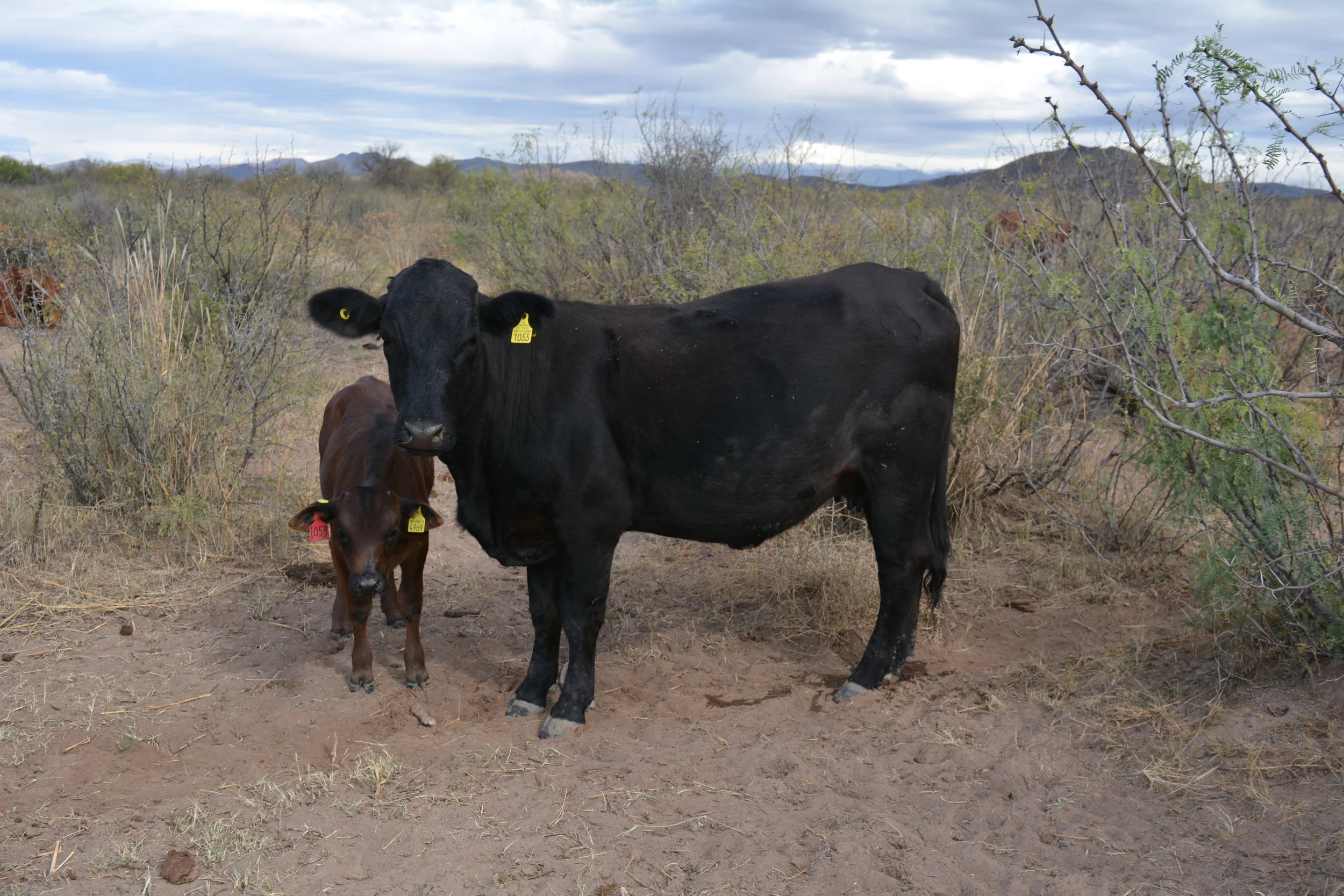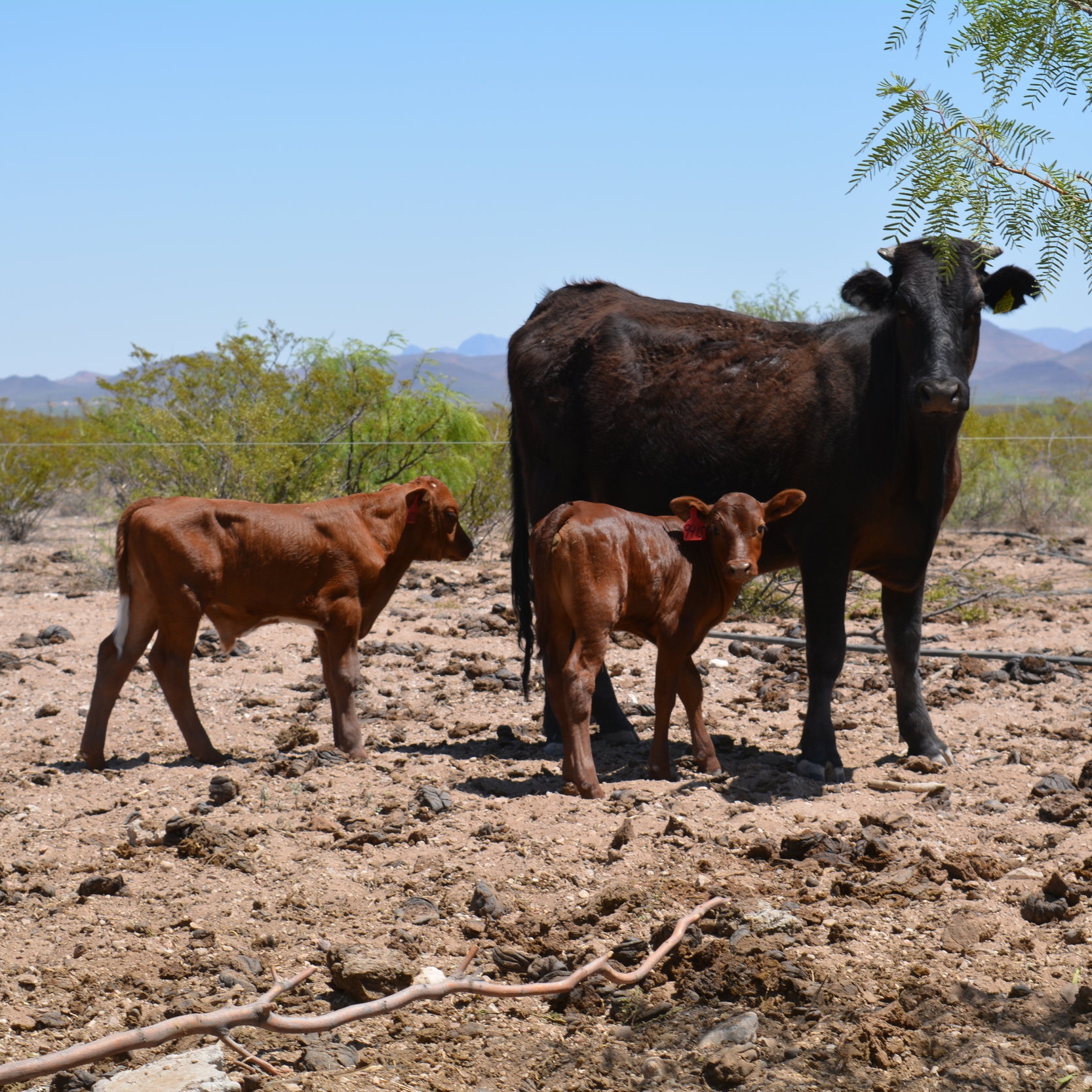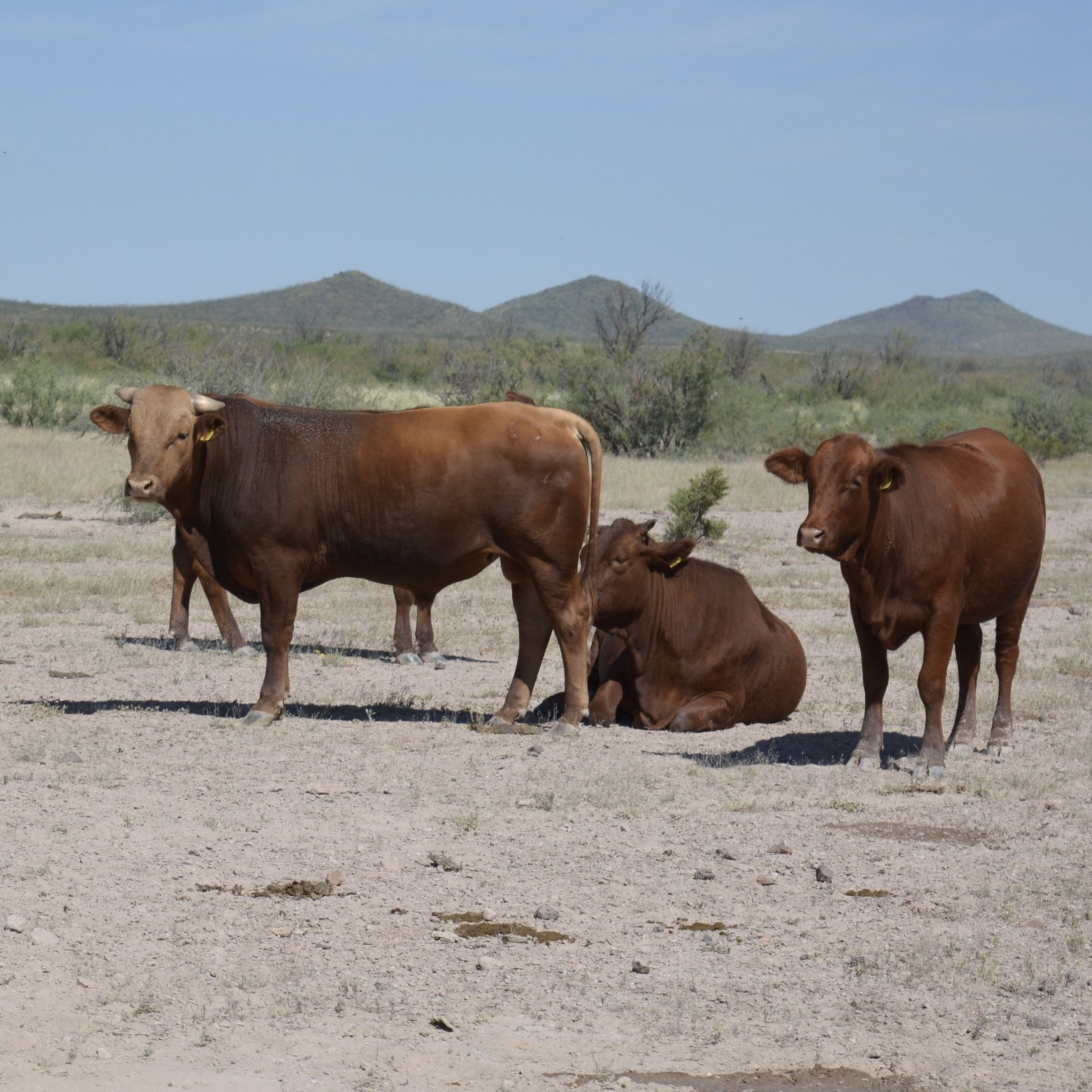Academia, paradigms, and many ranchers strongly advocate towards controlled calving so that cows receive the best nutrition available prior and during calving to increase productivity. Indeed, this is a very logical statement and practice in theory but does it really take into consideration the best and most profitable model for the open range? Especially in the desert or places with erratic unpredictable rainfall? Can you afford financially to have any open cows in your operation? In my experience, there have been many years when the rains are delayed or never arrive. Other times when temperature changes trigger unexpected high nutritional forage in the form of herbs and flowers and early spring growth that occur at times of the year when our cattle don’t capitalize from these benefits. The real question, are we really able to determine the exact and best time when our cows should calve or does nature know best?
There are many factors in nature that are out of our control and can severely hurt our calving rates even if we attempt everything in our power to prevent disaster. Needless to say, we have all been there. Every year ranchers want to know whether or not their cows will be pregnant. Usually there is only success to be seen if you have made your goal herd health, optimal body condition and taking care of the land. This holds true regardless if there is controlled or open calving and here is why:
There are very few places on earth where weather patterns are consistent, rains are reliable, and temperatures are predictable. If you are fortunate to live in such a place, this article is definitely not for you. For the rest of us, especially in the southwest, we know all too well every year brings something new. Often time’s blessings but also some tears. When I first took over the family ranch I thought I had it all figured out. Exactly when my cows were going to graze, for how long in each pasture, when the cows were going to calve and how long I would release the bulls. The first three years we got hit by a drought and later by a record freeze in early spring that set our pastures back a full decade when it used to be continuously overgrazed by wild cows and feral donkeys. What had worked well in previous years all of a sudden seemed to be disastourous and any effort to impose my will on nature only led to failure. In the chaos of nature we continued to manage as if it were the same as before. Practicing green pasture calving, waiting to release the bulls until the herd had sufficient time to recover during what we thought was the best time of year, even supplementing protein when needed to improve forage digestion. But still we were not achieving the successes we were hoping for. At the rate we were going with low conception numbers there was little hope for herd expansion and the future profitability of the ranch. However, through these failures, I never stopped questioning who was to blame. Was it the cows fault or human ignorance?
The key to success lies on nutrition. It is the same reason why many disagree whether or not calving should be controlled or open throughout the year. So which one is it? My simple answer, do whichever one works for you, your specific goal and operation. In predictable environments (humid zones) or irrigated pastures controlled or open calving will work regardless of many mistakes because nutrition is available throughout or at an expected time of the year. Therefore, it is a very forgiving environment. In other environments where seasonal rains are guaranteed or if temperatures are very extreme and cyclical (harsh winters), controlling the pregnancy towards best nutrition will guarantee success year after year. In these same environments open calving wont matter much. Both systems will work because naturally the cows will control themselves. Just like many wild animals such as deer.
The more brittle the environment and the more unpredictable plant nutrition and growth is, the decision becomes more difficult because we are more likely to make mistakes and choose the wrong time of year. Nature is too erratic and the slightest changes will severely affect productivity. For example, two years ago we received three inches of rain in March. This was 20% of my annual moisture during a time of year I usually don’t get anything. This event spurred very productive growth as it fell during a time of the year where temperatures are cooler, reducing evaporation. To my surprise, those three inches of rain were more effective than the other six that fell in the summer due to temperature differences. Thus, the ranch had its best available nutrition during an out of season time.
Nutrition also comes in various forms and it may not necessarily be the best when we determine what our cows “should” be eating. It may be herbs, flowers, and palatable shrubs such as mesquite vine. All of these alternatives may actually provide better nutrition, especially natural protein, to the animals if we make it available to them, which is where good management comes in. These vegetative spurts of growth can be more nutritious than tall luscious grass. We often take this for granted because we fail to observe. I’ve seen cows eat cactus, yucca flowers and leaves with high tannin levels that we often think of as unpalatable. I have even seen them eat young prickly pear cactus in the spring when they tend to be delicate, and numerous herbs that cattle are more likely to ignore the rest of the year.
In brittle volatile environments we may have several years of successful controlled calving. But the year will come, mark my word if it hasn’t already, when it won’t rain; it may even last several years as I’ve experience. My hope in sharing our experiences and knowledge is that people will be more open to the idea of allowing your cattle to decide what is best for them both from the standpoint of nutrition and calving times. When you ranch in the open range you are at the mercy of many things and with a little observation I guarantee you many successful surprises. In my opinion, when weather is unpredictable calving should not be controlled. In fact, open calving may provide greater financial stability as we are finding out.
One positive aspect of open calving most often overlooked is the opportunity for the genetically superior animals well adapted to your environment to excel and outperform their piers. Well into my third year of uncontrolled calving I’ve collected data on individual cattle performance in my herd. Roughly 60% naturally have found the time of year they prefer to calve from July to October. This makes sense as it tends to be our rainy season and the land is more productive. The remainder of the herd is scattered throughout the year but maintain in optimal body condition contrary to common belief, due to alternate sources of food. There is always that bottom end of the herd that regardless of management are falling behind with 120 day recovery periods and those must be identified and cooled. What is surprising is how the best cows never lost their natural cycle and in some instances, 10% of the herd only had a 35-day empty period. After calving, these animals were able to regain body condition right away and the following year they calved up to two months sooner. Meaning they provided a calf faster than once a year. Eventually they speed themselves up to a point where nature wont allow them to keep going and they will go back to the best time of year, whenever that may be.
In the case of drought, nature might see fit that cattle will provide a calf after 13 or 14 months, depending on the severity of the drought. If controlled calving continues it will have unsatisfactory results during a dry spell. The interesting point I have observed is what happens the following year after a drought. When rains resume the best cows stayed the same and the rest calved later in the season in exceptional body conditions to the point where it is very likely once again they will speed up and catch the rest of the herd on the third year. This ability for cattle to speed up or slow down postpartum estrus is nature’s way to adapt to various environmental changes to nutrition. In unpredictable environments there might not be two of the same years in a row but that’s how nature controls what can be achieved. We find by keeping the bull’s year around we allow nature to take its course, make management easier, and provide for the best of the herd to excel their fellow herd members and form a league of their own. This to me is the most valuable information anyone staring a new herd could have because the top 10% of my cows show similar physical traits best suited for my own unique and particular environment and MANAGEMENT. How else would you have distinguished good cows from excellent cows? The bad ones are always easy to spot.
On the heifers a similar situation arises where the best ones get pregnant at an earlier age. Some as soon as twelve months, and calve before or right at 24 months. Many maintained optimal body condition without supplementation and not a single one had calving complications (for the past two years). This demonstrates one can select the best animals for your particular situation at an earlier age. The replacement heifers become selected and breed naturally by the bulls before most other ranchers even consider releasing them. The rest, or empty heifers, can be kept or sold at a very high premium knowing already they wont be able to catch up with the rest of the super selected herd your are creating.
I hope this article gets people thinking about the possibilities and how backwards we tend to think at times. Nature knows best and we ought to listen, observe and learn. For those saying it’s extra work, it’s not true. I see my cows every day and the way I rotate throughout the property they are bound to go trough the corral several times a year. Branding and weaning become faster and easier to work with fewer people, headaches, and stress for my animals. Financially everything is for sale at all times. If the market wants pregnant heifers; I sell what I know is not performing as well. Not to mention typically pregnant cows are harder to find and yield a premium. Market wants empty cattle; I have those who are struggling each year. Market wants bulls; I have an inventory of all ages ready for sale. In the mean time all my steers keep gaining weight on the pasture rather than sitting in a bank account with poor interest rates. And away from my wife’s spending habits.




